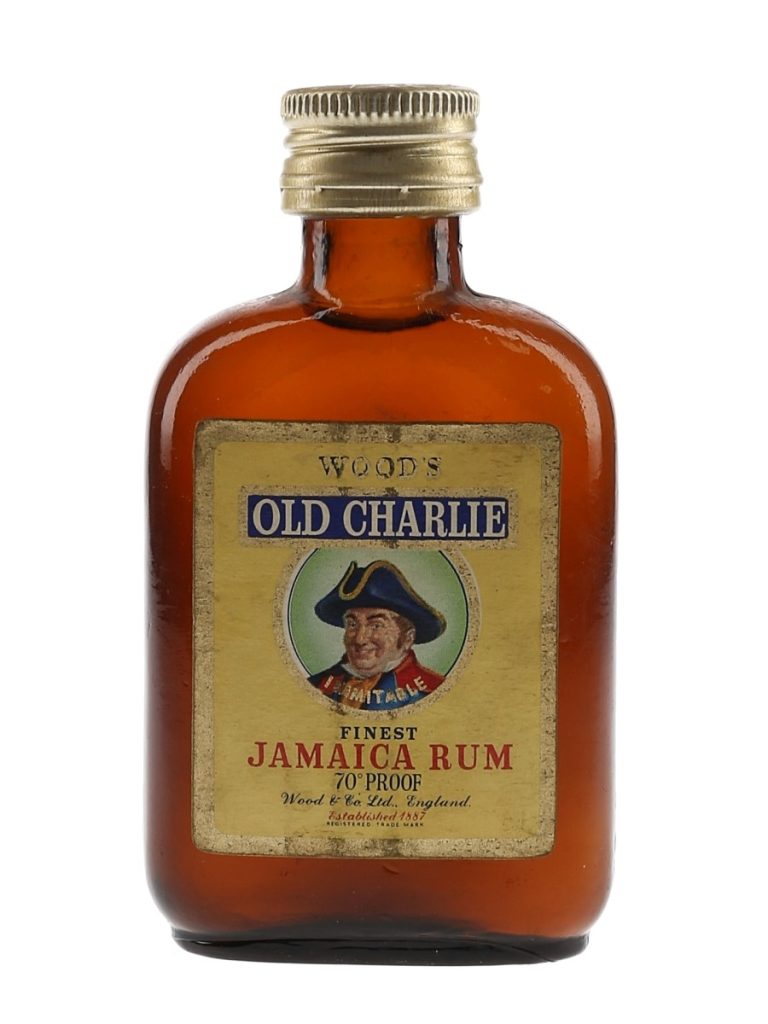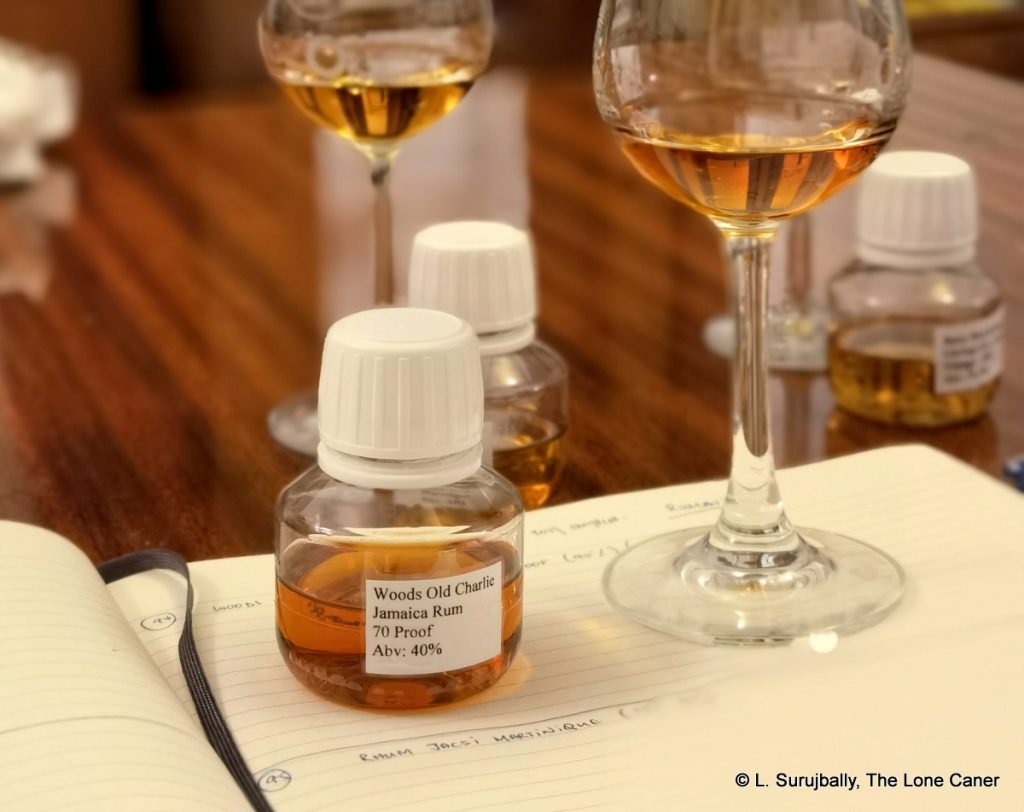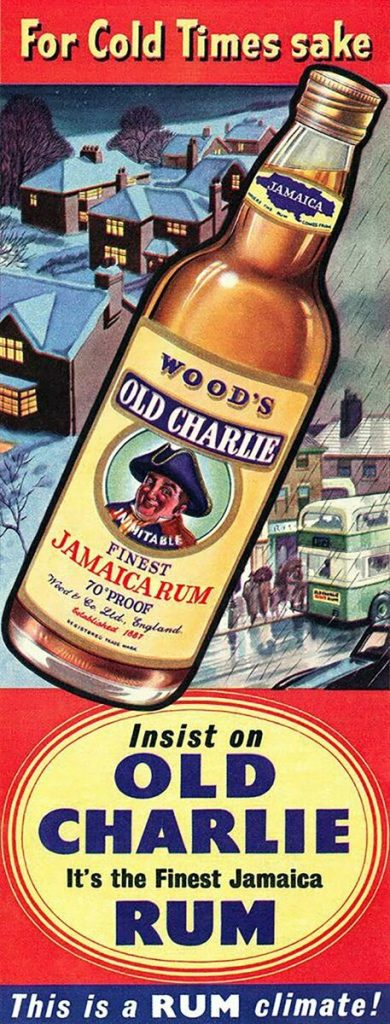Rumaniacs Review R-158 | #1025
Most people in the UK are familiar with the Woods brand and the rise of online auctions over the last years spread knowledge further, so it’s become reasonably common knowledge that Woods was founded in 1887 and bought by William Grant & Sons from Diageo in 2002 along with OVD and Vat 19. However, Diageo’s ownership seems to have been rather recent – they acquired the Woods brand from Seagram in 2000 when that company merged with Vivendi and divested some of its properties.
Seagram’s acquisition of Woods was much earlier, though: there is a reference that in during the Second World War, Seagram “imported rum from Puerto Rico and Jamaica, which led to the purchase of distilleries in the Caribbean that produced Captain Morgan, Myers’s, Wood’s and Trelawny rums.” This is probably Longpond and Clarendon in Jamaica (the Puerto Rico operations are outside the scope of this article); and a 2009 paper by Graham Taylor notes that “Between 1952 and 1956, Sherriff & Co. of Jamaica, Wood & Co., Ltd., Robert Legge & Co., Ltd., and Myers Rum Co., Ltd., of Nassau were all added to the Seagram empire.”
Whoever owned it and whether a company favoured Jamaica or Guyana for the releases, Wood’s remains a successful brand on sale to this day – supposedly still using the original recipe for Navy rum (which is unlikely, but ok, that’s marketing for you). For the most part they have acted as merchant bottlers, blending and bottling rums from the British Caribbean, primarily Jamaica and Guyana – the current Old Navy Rum is all Guyana, for example while there is no sign of a Jamaica – and vacillated between 40% and 57% ABV over the decades, depending on what they were making.
Not much has changed since I first wrote about Woods 100 Navy Rum ten years ago – the site remains a receptacle of no-information. We have no sense of who the movers and shakers of the original company were, what other rums they made, how the labels changed over the years, the different bottlings, the heritage, the history, the 2002 sale, nothing. And to add insult to injury, there’s not even a mention of the Old Charlie rum, let alone who he was, and nowadays, this version is neither made nor listed on the website. Stuff like this makes me despair for the next generation of rum writers and researchers.
Colour – Amber
Strength – 70° Proof / 40% ABV
Nose – Solid aromas here…but initially quite peculiar. Peeling wallpaper, tatty paper, cardboard and old books in the bookshelves of back alley second hand bookstores where you might find a first edition of Rums of the Eastern Caribbean gathering dust. Chocolate, vanilla, coffee, brine, cream puffs, ginger bread cookies, lemon meringue pie…a sort of olfactory dessert table, accompanied by enough faux leather to outfit a bunch of wannabe hoods doing a doo-whop on the corner. Or maybe Adam West just flew by in new rubber threads, who knows – the rum is old, it could be anything
 Palate – Not bad. Iodine, ethanol, acetone, all burning off fast. Some licorice (rather light), caramel, vanilla, toffee, all the usual that suggests something of a nascent Appleton from Ago but which remains hard to define precisely. Brine, hot black tea, fish oil, olives. It’s not very sweet, rather more like tart. Nuts and too-old, too-strong, too-bitter percolated coffee, yet for all that, I liked it.
Palate – Not bad. Iodine, ethanol, acetone, all burning off fast. Some licorice (rather light), caramel, vanilla, toffee, all the usual that suggests something of a nascent Appleton from Ago but which remains hard to define precisely. Brine, hot black tea, fish oil, olives. It’s not very sweet, rather more like tart. Nuts and too-old, too-strong, too-bitter percolated coffee, yet for all that, I liked it.
Finish – Short. Nothing special here, a recap at best. Dry, some ripe fruits, raisins, chocolate, coffee.
Thoughts – It’s okay. A lot of muskiness, a sort of dry spiciness, not so much in the funk department. It’s hard to pinpoint the rums origin as Jamaican beyond doubt (although there’s no real reason to) because the crisp clarity of today’s funky island rums which we have learned to grade so well, is missing — and so to say which estate distillery made it, or even that it’s Jamaican at all, is harder than it appears. Still, the general profile of the rum remains consistent with others from the brand I’ve sampled over the years, and if auction sites come up with these older 1970s and 1960s and earlier Woods rums, I’d buy them on general principles, and not just for the history.
(82/100) ⭐⭐⭐½
Other Notes
- My thanks and deep appreciation to Nicolai Wachmann who sent me the sample, knowing of my love and interest in older and almost forgotten rums.
- The exact dating and bottling of the rum is unclear. Given the source, I think 1970s is a reasonable estimate – a bottle from the 1960s strikes me as being too rare on the secondary market and by the late 1970s the ° Proof symbol was replaced by % ABV.
- Age is unknown, still unknown, estate/distillery is unconfirmed to be (possibly) Long Pond or Clarendon.

